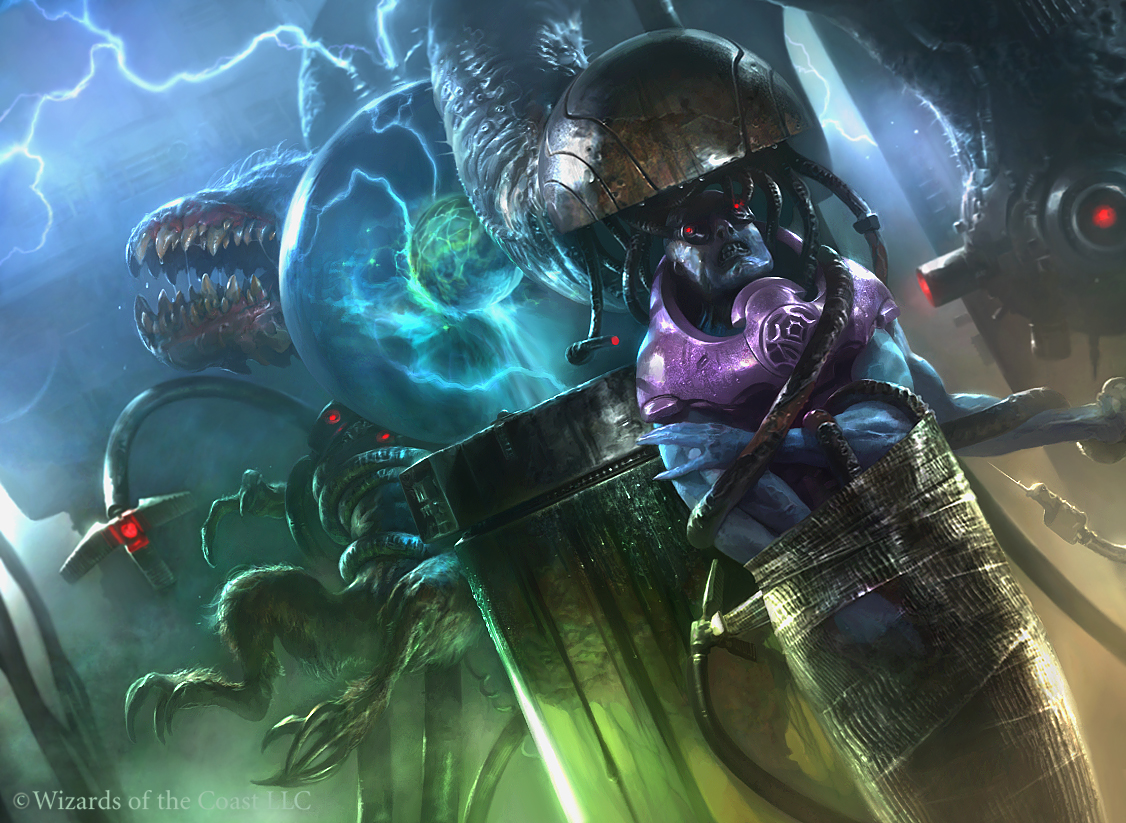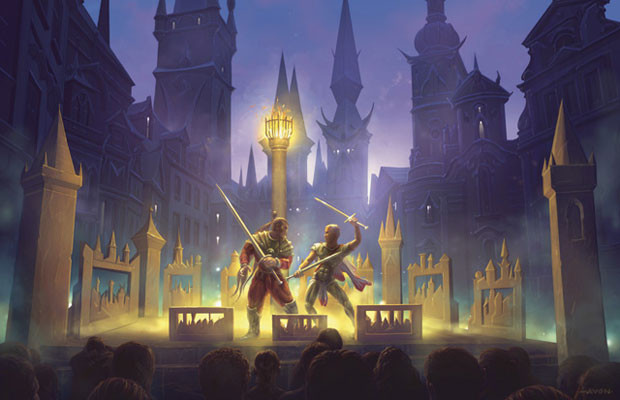By: Jared Yost
It’s that time again folks! As you may be aware these days cards seem to be spiking out of nowhere. Does the spike have merit, signaling a card has corrected itself in price? Is it just hype or a buyout where somebody thinks they struck gold but really it’s fools gold? Let’s take a look at the facts and try to analyze what’s going on here.
FNM Gitaxian Probe and New Phyrexia Gitaxian Probe FOIL
I think that this spike, in terms of what it was versus what it became, is very shocking. FNM Probe’s started at $2.50-$3 in January, with a minor rise to $4-$5 until last week, to the current spiked price of $15. From January until now that is a 500% increase. Similarly, NPH Gitaxian Probe foils were $4-$6 back in January and now are around $30 on tcgplayer. I knew it was a solid target but at the same time I was surprised at how far these two versions jumped because the card is a common. However, it just goes to show you that rarer forms of commons can certainly hold a premium price if they are sought after enough. An extreme would be foil Japanese Brainstorm which is worth about $340.
In general, Twitter contains some solid advice if you are following the right people for magic finance. Back in January, Twitter got me thinking about Gitaxian Probe foils (I believe @JasonEAlt made this tweet but unfortunately I couldn’t find it.) When I saw tweets about FNM Gitaxian Probe and Foil New Phyrexia Gitaxian Probe being criminally underpriced I looked into it further.
After my research, I also thought it was a solid pick for two reasons. First is that it is played in both Modern and Legacy, which means that foil copies will retain demand over time from the eternal players that eventually like to foil out their decks. Second is that Phyrexian mana spells are really hard to reprint since it is such a set specific mechanic. Everyone remembers Mental Misstep, so due to that huge mistake I think that Wizards is very hesitant to bring a mechanic like this back.
I then went to TCGPlayer and saw tons of FNM copies listed at $2.50 per piece and NPH foil copies listed from $4-$6. I thought that this was a low price considering the amount of play the card was seeing and picked up my copies accordingly. I’ve had them ever since and am glad I was able to capitalize on the Twitter advice.
Going forward I would say that the new price is going to stick especially for NPH foil copies. It is a card that is popular in both Legacy and Modern and I don’t see it going away for a long time due to it being a “free” spell.
Ancient Tomb
This spike, at least for me, was eerily similar to the Gitaxian Probe spike in terms of how I heard about it and the time it took from hearing that advice until the time that it decided to spike. Just like Gitaxian Probe, I first heard about Ancient Tomb on Twitter via the Brainstorm Brewery podcast. Being the counterpart to the other two-colorless land City of Traitors that is played in Legacy archetypes, they noticed that City of Traitors was $70 while Ancient Tomb was $10. Wasteland, which has gone over $130 recently, is a good example here of how underpriced Ancient Tomb was since it was from the same set. Although clearly Wasteland sees a ton more play than Ancient Tomb, $10 is quite low for a Legacy staple considering its power level.
Again, just like Probe, I checked out the price on TCGPlayer and the average in February was $10. Again, I picked up copies accordingly because I agreed that Ancient Tomb was popular and looked underpriced due to the play it was seeing. I regret not purchasing FTV: Realms copies of Ancient Tomb, since they are the only foil copy and have spiked way harder than the Tempest copies have.
For both, I believe that this new price is here to stay. A solid Legacy staple from an older set that will have a home in Legacy archetypes, it was only a matter of time before this happened.
Food Chain
Due to the hype that Food Chain received from being a playset in a namesake deck that came in 4th place at the recent SCG: Los Angeles Legacy Open on 3/23/2014, it is no surprise that others decided to buy in. It went from $5 to $13, which is interesting because the first time this card spiked is when Misthollow Griffin was first spoiled back in Avacyn Restored. Around then it jumped up to about $13 as well, but since no one could do anything with the deck at the time it dropped right back down to its original price of around $5 after several months. Now that a Misthollow Griffin deck featuring Food Chain has placed in a SCG Open Top 8, I believe the new price is here to stick and could even increase if the deck keeps seeing Top 8 or Top 16 appearances.
Besides Food Chain, other cards from this deck to watch include Manipulate Fate and Shardless Agent. Manipulate Fate may seem like a strange target but I like foil copies at $0.50. If others decide to build this deck, clearly $0.25 for an uncommon from a set as old as Invasion seems low. It wouldn’t hurt to pick up a playset for yourself if you plan on building this deck for a Legacy event. Shardless Agent has already proven itself as a solid card in Legacy, with an archetype to its name (Shardless BUG) and only one printing in a somewhat limited product. This new archetype could be what it takes to get the Agent over $20.
Autumn Willow
Huh, going from $1 or less to $5 suddenly seems strange for this Homelands rare. I’m guessing a buyout occurred on TCGPlayer where someone bought up all the copies in hopes of turning them around at a later point for profit. Unfortunately for them, this card just isn’t that good. I realize that is has pseudo-hexproof but it just can’t compete with the all the crazy new kids on the block these days. I’m not sure if it will be ever less than $2 due to rarity alone but it is certainly not worth $5 and definitely not worth buying in at this point.
Leonin Arbiter
Going from less than a $1 to $2-$3 may not be much of a spike but it is certainly a double up at the least. Leonin Arbiter is a fine card in the Modern Hatebear deck and even sees play from time to time in Legacy in Death and Taxes, although this appearance is much rarer than Modern. I can see why someone would be looking to pick these up. Though he isn’t as great as Thalia (which also has gone up recently) or Aven Mindcensor in Modern, he is still usually seen as a playset in the the Hatebear decks that do exist. Modern is still pretty wide open, so even though his price has already doubled I think he still has room for future growth. This current spike is just a price correction.
I wouldn’t be surprised if he even climbed as high as $5 during Modern season if Hatebears puts up any Top 8 results. I wouldn’t actively trade for these guys as he plays a limited role in only one deck archetype and is from a fairly recent large set, but if you plan on playing Hatebears try to pick up your playset before Modern season goes into full swing.
Silent-Blade Oni & Ghostly Prison
I’ll lump these two together because they are both spiking cards that derive their demand largely from the casual market. Ghostly Prison does see play in Legacy and Modern from time to time but clearly its demand is 95% casual.
Ghostly Prison has demand but its price is contingent on when the next reprint happens. Stocking up on these and then seeing Wizards announce a product where it is reprinted will be bad for whoever decides to buy in at $7. Wizards has already reprinted Ghostly Prison three times so they have shown they want to get copies out there. Stay far away from this one, since there is almost no demand from the tournament scene and it could be reprinted at any time. If you have extra Prisons trade them into more solid long term gainers.
On the other hand, my first impressions of Silent-Blade Oni missed the mark. Silent-Blade Oni has a good chance of sticking to the new price. I now realize that since it only has one printing and utilizes the block specific mechanic Ninjutsu, there are only so many products that this guy could go into besides Commander or something similar. I wouldn’t expect him to go up in price again for quite a while since it already spiked last month. Even if it does spike again, you would be risking a lot for something where there is not a lot of money to be made. Clearly the casual market is a strong force but I would look to other targets as there is not really much money to be made here for the amount of time that you will need to wait and having the possibility of a reprint loom over your head.
Volcanic Island, Underground Sea, Plateau
Well, I think we’ve all seen this before. Starcity has a track record of raising their buylist prices on Legacy staples like dual lands in the hope that people will sell them what they have… only to then increase their store prices on those same dual lands by a huge margin to match the buylist increase. This is because they have a huge pulse on the market, being one of the top retailers of Magic products in the world, and use their inventory data to make price corrections based on the actual demand some of these cards are seeing so that they can capitalize off the demand.
If you’ve been playing this game long enough, dual lands going up in price should be no shock to you. Be aware that these days they can really go up a lot without much time for you to react and pick up them before the next spike. Long term, they are great gainers since the Reserved List guarantees that we won’t be seeing them or anything like them again.
I do share similar feelings with Travis about Modern replacing Legacy, and once that paradigm shift occurs I also agree that the dual lands won’t be the cards that go down. They’ll just teeter off, and go up slowly but surely like the Power 9 does over time. The takeaway here is that if you want dual lands you will need to budget, act according to your own needs, and develop a purchase plan if you are looking to eventually pick them up. I predict that they will spike a few more times before Modern replaces Legacy so the sooner you are able to act the better.
Final Thoughts
Here to Stay:
– Foil versions of Gitaxian Probe (FNM, New Phyrexia)
– Ancient Tomb
– Food Chain
– Leonin Arbiter
– Dual Lands
Ancient Tomb, Food Chain, and Leonin Arbiter are the shakiest inclusions for this category because of the reprint fear. However, for these three cards I don’t see that being a factor for quite some time. If you want to acquire them the new price is your reality and you won’t be getting a deal easily but they will trade well.
Risky:
– Ghostly Prison
– Silent-Blade Oni
Cards that derive their demand from the casual market and are reprintable are risky pickups. I would stay away from these, but if I see a good deal on them I would take it in the hopes of trading them for more solid gainers.
Stay Away:
– Autumn Willow
No real play, either in casual or tournament environments. Outclassed by newer cards with better effects. Acquire for gains at your own peril.



